Fujitsu ASHG12KGTE Handleiding
Bekijk gratis de handleiding van Fujitsu ASHG12KGTE (16 pagina’s), behorend tot de categorie Airco. Deze gids werd als nuttig beoordeeld door 35 mensen en kreeg gemiddeld 4.3 sterren uit 18 reviews. Heb je een vraag over Fujitsu ASHG12KGTE of wil je andere gebruikers van dit product iets vragen? Stel een vraag
Pagina 1/16

En-1
WARNING
• Installation of this product must be done by experienced service technicians or profes-
sional installers only in accordance with this manual. Installation by non-professional
or improper installation of the product might cause serious accidents such as injury,
water leakage, electric shock, or re. If the product is installed in disregard of the
instructions in this manual, it will void the manufacturer’s warranty.
• Do not turn on the power until all work has been completed. Turning on the power be-
fore the work is completed can cause serious accidents such as electric shock or re.
• If refrigerant leaks when you are working, ventilate the area. If the leaking refrigerant
is exposed to a direct ame, it may produce a toxic gas.
• Installation must be performed in accordance with regulations, codes, or standards for
electrical wiring and equipment in each country, region, or the installation place.
• Do not use means to accelerate the defrosting process or to clean, other than those
recommended by the manufacturer.
• This appliance is not intended for use by persons (including children) with reduced
physical, sensory or mental capabilities, or lack of experience and knowledge, unless
they have been given supervision or instruction concerning use of the appliance by a
person responsible for their safety. Children should be supervised to ensure that they
do not play with the appliance.
• To avoid danger of suocation, keep the plastic bag or thin lm used as the packaging
material away from young children.
• The appliance shall be stored in a room without continuously operating ignition
sources (for example: open ames, an operating gas appliance or an operating
electric heater).
• Do not pierce or burn.
• Be aware that refrigerants may not contain an odour.
CAUTION
• Read carefully all safety information written in this manual before you install or use the
air conditioner.
• Install the product by following local codes and regulations in force at the place of
installation, and the instructions provided by the manufacturer.
• This product is part of a set constituting an air conditioner. The product must not be
installed alone or be installed with a device not authorized by the manufacturer.
• Always use a separate power supply line protected by a circuit breaker operating on
all wires with a distance between contact of 3 mm for this product.
• To protect the persons, ground (earth) the product correctly, and use the power cable
combined with an Earth Leakage Circuit Breaker (ELCB).
• This product is not explosion proof, and therefore should not be installed in an explo-
sive atmosphere.
• To avoid getting an electric shock, never touch the electrical components soon after
the power supply has been turned o. After turning o the power, always wait 5 min-
utes or more before you touch the electrical components.
• This product contains no user-serviceable parts. Always consult experienced service
technicians for repairing.
• When moving or relocating the air conditioner, consult experienced service technicians
for disconnection and reinstallation of the product.
• Do not touch the aluminum ns of heat exchanger built-in the indoor or outdoor unit to
avoid personal injury when you install or maintain the unit.
• Do not place any other electrical products or household belongings under the product.
Condensation dripping from the product might get them wet, and may cause damage
or malfunction to the property.
• Be careful not to scratch the air conditioner when handling it.
AIR CONDITIONER
Wall Mounted Type
INSTALLATION MANUAL
Contents
1. SAFETY PRECAUTIONS 1 ..................................................................
1.1. Precautions for using R32 or R410A refrigerant 2 .........................
1.2. Precautions for using R32 refrigerant 2 ........................................
2. PRODUCT SPECIFICATION 4 .............................................................
2.1. Installation tools 4 ..........................................................................
2.2. Accessories ................................................................................ 4
2.3. Pipe requirement 4 ........................................................................
2.4. Electrical requirement 4 .................................................................
2.5. Optional parts ............................................................................. 4
3. INSTALLATION WORK ..................................................................... 5
3.1. Selecting an installation location ................................................ 5
3.2. Removing and replacing parts .................................................... 5
3.3. Pipe installation 6 ..........................................................................
3.4. Electrical wiring 8 ...........................................................................
3.5. Remote controller installation ..................................................... 9
4. OPTIONAL INSTALLATION WORK 9 ..................................................
4.1. Optional kit installation 10 ..............................................................
4.2. Group control .............................................................................11
5. FUNCTION SETTING.......................................................................11
5.1. Function details ........................................................................ 12
6. TEST RUN 13 .......................................................................................
7. FINISHING ...................................................................................... 13
8. CUSTOMER GUIDANCE 13 ................................................................
9. ERROR CODES 14 ..............................................................................
PART No. 9387603224-01
1. SAFETY PRECAUTIONS
• Be sure to read this manual thoroughly before installation.
• The warnings and precautions indicated in this manual contain important information
pertaining to your safety. Be sure to observe them.
• Hand this manual, together with the operation manual, to the customer. Request the
customer to keep them on hand for future use, such as for relocating or repairing the
unit.
WARNING Indicates a potentially or imminently hazardous situation
which, if not avoided, could result in death or serious injury.
CAUTION Indicates a potentially hazardous situation that may result in
minor or moderate injury or damage to property.
[Original instructions] For authorized service personnel only.
EnglishDeutschFrançaisEspañolItalianoEλληvIkάPortuguêsРусский
Türkçe
Türkçe

En-2
1.1. Precautions for using R32 or R410A refrigerant
The basic installation work procedures are the same as conventional refrigerant (R410A,
R22) models.
However, pay careful attention to the following points:
Since the working pressure is 1.6 times higher than that of refrigerant R22 models,
some of the piping and installation and service tools are special. (Refer to
“2.1. Installation tools”.)
Especially, when replacing a refrigerant R22 model with a new refrigerant R32 model,
always replace the conventional piping and flare nuts with the R32 and R410A piping and
are nuts on the outdoor unit side.
For R32 and R410A, the same are nut on the outdoor unit side and pipe can be used.
Models that use refrigerant R32 and R410A have a dierent charging port thread diam-
eter to prevent erroneous charging with refrigerant R22 and for safety. Therefore, check
beforehand. [The charging port thread diameter for R32 and R410A is 1/2-20 UNF.]
Be more careful than R22 so that foreign matter (oil, water, etc.) does not enter the
piping. Also, when storing the piping, securely seal the opening by pinching, taping, etc.
(Handling of R32 is similar to R410A.)
1.2. Precautions for using R32 refrigerant
CAUTION
1-Installation (Space)
• That the installation of pipe-work shall be kept to a minimum.
• That pipe-work shall be protected from physical damage.
• The appliance shall not be installed in an unventilated space, if that space is smaller
than X m2.
Amount of refrigerant charge
M (kg)
Minimum room area
X (m2)
M ≤ 1.22 -
1.22 < M ≤ 1.23
1.45
1.23 < M ≤ 1.50 2.15
1.50 < M ≤ 1.75 2.92
1.75 < M ≤ 2.0 3.82
2.0 < M ≤ 2.5 5.96
2.5 < M ≤ 3.0 8.59
3.0 < M ≤ 3.5 11.68
3.5 < M ≤ 4.0 15.26
(IEC 60335-2-40)
• That compliance with national gas regulations shall be observed.
• That mechanical connections shall be accessible for maintenance purposes.
• In cases that require mechanical ventilation, ventilation openings shall be kept clear
of obstruction.
• When disposing of the product is used, be based on national regulations, properly
processed.
2-Servicing
2-1 Service personnel
• Any person who is involved with working on or breaking into a refrigerant circuit
should hold a current valid certicate from an industry-accredited assessment
authority, which authorises their competence to handle refrigerants safely in accor-
dance with an industry recognised assessment specication.
• Servicing shall only be performed as recommended by the equipment manufacturer.
Maintenance and repair requiring the assistance of other skilled personnel shall be
carried out under the supervision of the person competent in the use of ammable
refrigerants.
• Servicing shall be performed only as recommended by the manufacturer.
2-2 Work
• Prior to beginning work on systems containing ammable refrigerants, safety checks
are necessary to ensure that the risk of ignition is minimized. For repair to the refrig-
erating system, the precautions in 2-2 to 2-8 shall be complied with prior to conduct-
ing work on the system.
• Work shall be undertaken under a controlled procedure so as to minimize the risk of
a ammable gas or vapour being present while the work is being performed.
• All maintenance sta and others working in the local area shall be instructed on the
nature of work being carried out.
• Work in conned spaces shall be avoided.
• The area around the workspace shall be sectioned o.
• -Ensure that the conditions within the area have been made safe by control of am
mable material.
2-3 Checking for presence of refrigerant
• The area shall be checked with an appropriate refrigerant detector prior to and during
work, to ensure the technician is aware of potentially ammable atmospheres.
• -Ensure that the leak detection equipment being used is suitable for use with am
mable refrigerants, i.e. nonsparking, adequately sealed or intrinsically safe.
CAUTION
2-4 Presence of re extinguisher
• If any hot work is to be conducted on the refrigeration equipment or any associated
parts, appropriate re extinguishing equipment shall be available at hand.
• Have a dry powder or CO2 re extinguisher adjacent to the charging area.
2-5 No ignition sources
• No person carrying out work in relation to a refrigeration system which involves
exposing any pipe work that contains or has contained ammable refrigerant shall
use any sources of ignition in such a manner that it may lead to the risk of re or
explosion.
• All possible ignition sources, including cigarette smoking, should be kept suciently
far away from the site of installation, repairing, removing and disposal, during which
ammable refrigerant can possibly be released to the surrounding space.
• Prior to work taking place, the area around the equipment is to be surveyed to make
sure that there are no ammable hazards or ignition risks. “No Smoking” signs shall
be displayed.
2-6 Ventilated area
• Ensure that the area is in the open or that it is adequately ventilated before breaking
into the system or conducting any hot work.
• A degree of ventilation shall continue during the period that the work is carried out.
• The ventilation should safely disperse any released refrigerant and preferably expel
it externally into the atmosphere.
2-7 Checks to the refrigeration equipment
• Where electrical components are being changed, they shall be t for the purpose
and to the correct specication.
• At all times the manufacturer’s maintenance and service guidelines shall be followed.
• If in doubt consult the manufacturer’s technical department for assistance.
• The following checks shall be applied to installations using ammable refrigerants.
- The charge size is in accordance with the room size within which the refrigerant
containing parts are installed.
- The ventilation machinery and outlets are operating adequately and are not
obstructed.
- If an indirect refrigerating circuit is being used, the secondary circuit shall be
checked for the presence of refrigerant.
- Marking to the equipment continues to be visible and legible. Markings and signs
that are illegible shall be corrected.
- Refrigeration pipe or components are installed in a position where they are unlikely
to be exposed to any substance which may corrode refrigerant containing compo-
nents, unless the components are constructed of materials which are inherently
resistant to being corroded or are suitably protected against being so corroded.
2-8 Checks to electrical devices
• Repair and maintenance to electrical components shall include initial safety checks
and component inspection procedures.
• If a fault exists that could compromise safety, then no electrical supply shall be con-
nected to the circuit until it is satisfactorily dealt with.
• If the fault cannot be corrected immediately but it is necessary to continue operation,
an adequate temporary solution shall be used.
• This shall be reported to the owner of the equipment so all parties are advised.
• Initial safety checks shall include.
- That capacitors are discharged: this shall be done in a safe manner to avoid pos-
sibility of sparking.
- That there no live electrical components and wiring are exposed while charging,
recovering or purging the system.
- That there is continuity of earth bonding.
3-Repairs to sealed components
• During repairs to sealed components, all electrical supplies shall be disconnected
from the equipment being worked upon prior to any removal of sealed covers, etc.
• If it is absolutely necessary to have an electrical supply to equipment during servic-
ing, then a permanently operating form of leak detection shall be located at the most
critical point to warn of a potentially hazardous situation.
• Particular attention shall be paid to the following to ensure that by working on electri-
cal components, the casing is not altered in such a way that the level of protection is
aected.
• This shall include damage to cables, excessive number of connections, terminals not
made to original specication, damage to seals, incorrect tting of glands, etc.
• Ensure that apparatus is mounted securely.
• Ensure that seals or sealing materials have not degraded such that they no longer
serve the purpose of preventing the ingress of ammable atmospheres.
• Replacement parts shall be in accordance with the manufacturer’s specications.
NOTE: The use of silicon sealant may inhibit the eectiveness of some types of leak
detection equipment.
Intrinsically safe components do not have to be isolated prior to working on
them.
4-Repair to intrinsically safe components
• Do not apply any permanent inductive or capacitance loads to the circuit without
ensuring that this will not exceed the permissible voltage and current permitted for
the equipment in use.
• Intrinsically safe components are the only types that can be worked on while live in
the presence of a ammable atmosphere.
• The test apparatus shall be at the correct rating.
• Replace components only with parts specied by the manufacturer.
• Other parts may result in the ignition of refrigerant in the atmosphere from a leak.

En-3
CAUTION
5-Cabling
• Check that cabling will not be subject to wear, corrosion, excessive pressure, vibra-
tion, sharp edges or any other adverse environmental eects.
• The check shall also take into account the eects of aging or continual vibration from
sources such as compressors or fans.
6-Detection of ammable refrigerants
• Under no circumstances shall potential sources of ignition be used in the searching
for or detection of refrigerant leaks.
• A halide torch (or any other detector using a naked ame) shall not be used.
7-Leak detection methods
• Electronic leak detectors shall be used to detect ammable refrigerants, but the
sensitivity may not be adequate, or may need re-calibration. (Detection equipment
shall be calibrated in a refrigerant-free area.)
• Ensure that the detector is not a potential source of ignition and is suitable for the
refrigerant used.
• Leak detection equipment shall be set at a percentage of the LFL of the refrigerant
and shall be calibrated to the refrigerant employed and the appropriate percentage
of gas (25 % maximum) is conrmed.
• Leak detection uids are suitable for use with most refrigerants but the use of
detergents containing chlorine shall be avoided as the chlorine may react with the
refrigerant and corrode the copper pipe-work.
• If a leak is suspected, all naked ames shall be removed/extinguished.
• If a leakage of refrigerant is found which requires brazing, all of the refrigerant shall
be recovered from the system, or isolated (by means of shut o valves) in a part of
the system remote from the leak.
Oxygen free nitrogen (OFN) shall then be purged through the system both before
and during the brazing process.
8-Removal and evacuation
• When breaking into the refrigerant circuit to make repairs – or for any other
purpose –conventional procedures shall be used.
However, it is important that best practice is followed since ammability is a consid-
eration.
The following procedure shall be adhered to:
• remove refrigerant
• purge the circuit with inert gas
• evacuate
• purge again with inert gas
• open the circuit by cutting or brazing
• The refrigerant charge shall be recovered into the correct recovery cylinders.
• The system shall be “ushed” with OFN to render the unit safe.
• This process may need to be repeated several times.
• Compressed air or oxygen shall not be used for this task.
• Flushing shall be achieved by breaking the vacuum in the system with OFN and
continuing to ll until the working pressure is achieved, then venting to atmosphere,
and nally pulling down to a vacuum.
• This process shall be repeated until no refrigerant is within the system.
• When the nal OFN charge is used, the system shall be vented down to atmospheric
pressure to enable work to take place.
• This operation is absolutely vital if brazing operations on the pipe work are to take
place.
• Ensure that the outlet for the vacuum pump is not close to any ignition sources and
there is ventilation available.
9-Charging procedures
• In addition to conventional charging procedures, the following requirements shall be
followed.
- Ensure that contamination of dierent refrigerants does not occur when using
charging equipment.
Hoses or lines shall be as short as possible to minimize the amount of refrigerant
contained in them.
- Cylinders shall be kept upright.
- Ensure that the refrigeration system is earthed prior to charging the system with
refrigerant.
- Label the system when charging is complete (if not already).
- Extreme care shall be taken not to overll the refrigeration system.
• Prior to recharging the system it shall be pressure tested with OFN.
• The system shall be leak tested on completion of charging but prior to commission-
ing.
• A follow up leak test shall be carried out prior to leaving the site.
CAUTION
10-Decommissioning
• Before carrying out this procedure, it is essential that the technician is completely
familiar with the equipment and all its details.
• It is recommended good practice that all refrigerants are recovered safely.
• Prior to the task being carried out, an oil and refrigerant sample shall be taken in
case analysis is required prior to re-use of reclaimed refrigerant.
• It is essential that electrical power is available before the task is commenced.
a) Become familiar with the equipment and its operation.
b) Isolate system electrically.
c) Before attempting the procedure ensure that:
• mechanical handling equipment is available, if required, for handling refriger-
ant cylinders;
• all personal protective equipment is available and being used correctly;
• the recovery process is supervised at all times by a competent person;
• recovery equipment and cylinders conform to the appropriate standards.
d) Pump down refrigerant system, if possible.
e) If a vacuum is not possible, make a manifold so that refrigerant can be removed
from various parts of the system.
f) Make sure that cylinder is situated on the scales before recovery takes place.
g) Start the recovery machine and operate in accordance with manufacturer’s
instructions.
h) Do not overll cylinders. (No more than 80 % volume liquid charge.)
i) Do not exceed the maximum working pressure of the cylinder, even temporarily.
j) When the cylinders have been lled correctly and the process completed, make
sure that the cylinders and the equipment are removed from site promptly and all
isolation valves on the equipment are closed o.
k) Recovered refrigerant shall not be charged into another refrigeration system un-
less it has been cleaned and checked.
11-Labelling
• Equipment shall be labelled stating that it has been de-commissioned and emptied
of refrigerant.
• The label shall be dated and signed.
• -Ensure that there are labels on the equipment stating the equipment contains am
mable refrigerant.
12-Recovery
• When removing refrigerant from a system, either for servicing or decommissioning, it
is recommended good practice that all refrigerants are removed safely.
• When transferring refrigerant into cylinders, ensure that only appropriate refrigerant
recovery cylinders are employed.
• Ensure that the correct number of cylinders for holding the total system charge are
available.
• All cylinders to be used are designated for the recovered refrigerant and labelled for
that refrigerant (i.e. special cylinders for the recovery of refrigerant).
• Cylinders shall be complete with pressure relief valve and associated shut-o valves
in good working order.
• Empty recovery cylinders are evacuated and, if possible, cooled before recovery
occurs.
• The recovery equipment shall be in good working order with a set of instructions
concerning the equipment that is at hand and shall be suitable for the recovery of
ammable refrigerants.
• In addition, a set of calibrated weighing scales shall be available and in good working
order.
• Hoses shall be complete with leak-free disconnect couplings and in good condition.
• Before using the recovery machine, check that it is in satisfactory working order, has
been properly maintained and that any associated electrical components are sealed
to prevent ignition in the event of a refrigerant release.
Consult manufacturer if in doubt.
• The recovered refrigerant shall be returned to the refrigerant supplier in the correct
recovery cylinder, and the relevant Waste Transfer Note arranged.
• Do not mix refrigerants in recovery units and especially not in cylinders.
• If compressors or compressor oils are to be removed, ensure that they have been
evacuated to an acceptable level to make certain that ammable refrigerant does not
remain within the lubricant.
• The evacuation process shall be carried out prior to returning the compressor to the
suppliers.
• Only electric heating to the compressor body shall be employed to accelerate this
process.
• When oil is drained from a system, it shall be carried out safely.
Explanation of symbols displayed on the indoor unit or outdoor unit.
WARNING
This symbol shows that this appliance uses a ammable
refrigerant.
If the refrigerant is leaked and exposed to an external igni-
tion source, there is a risk of re.
CAUTION This symbol shows that the operation manual should be
read carefully.
CAUTION
This symbol shows that a service personnel should be
handling this equipment with reference to the installation
manual.
CAUTION This symbol shows that information is available such as
the operation manual or installation manual.
Product specificaties
| Merk: | Fujitsu |
| Categorie: | Airco |
| Model: | ASHG12KGTE |
Heb je hulp nodig?
Als je hulp nodig hebt met Fujitsu ASHG12KGTE stel dan hieronder een vraag en andere gebruikers zullen je antwoorden
Handleiding Airco Fujitsu

15 Mei 2025
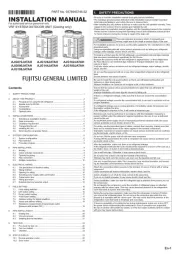
14 Mei 2025
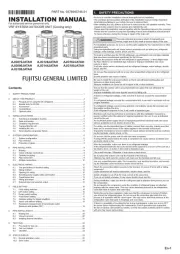
14 Mei 2025
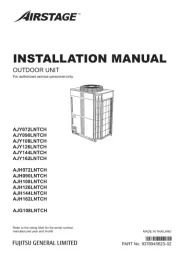
14 Mei 2025
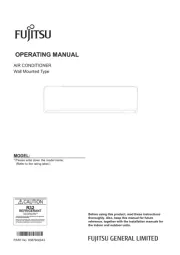
12 Mei 2025
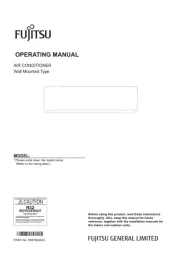
12 Mei 2025

3 April 2025

29 Maart 2025

24 Februari 2025

24 Februari 2025
Handleiding Airco
- GoldAir
- Sôlt
- White Knight
- Carson
- Hotpoint-Ariston
- Thomson
- Kogan
- AEG
- SEEGER
- Riffel
- Ravanson
- General
- Theben
- Klarstein
- Bonaire
Nieuwste handleidingen voor Airco
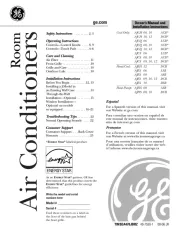
9 September 2025
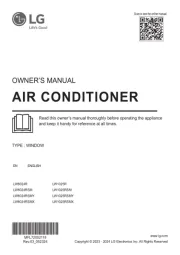
8 September 2025
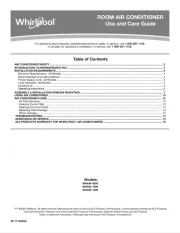
8 September 2025
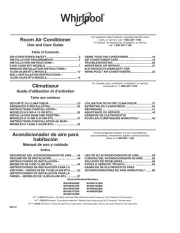
8 September 2025
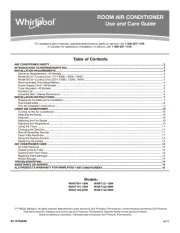
8 September 2025
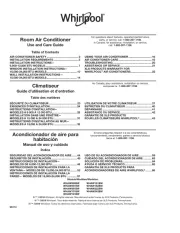
8 September 2025
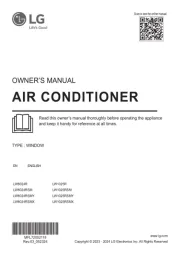
8 September 2025
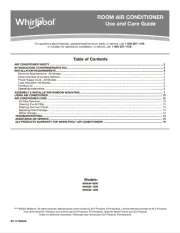
8 September 2025
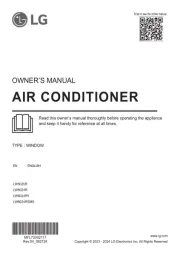
8 September 2025
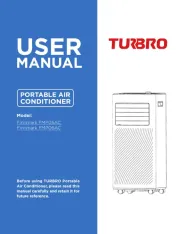
8 September 2025